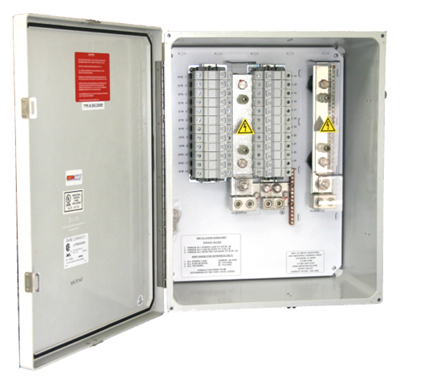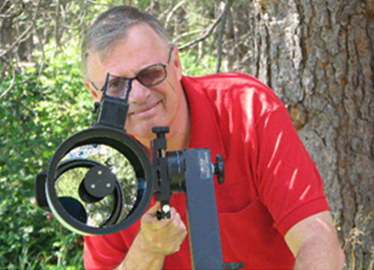AMtec Solar has applied its 25 years of experience in the Semiconductor, HVAC, Pharmaceutical, Alternative Energy, and Industrial Control markets to the solar industry. The produce solar combiner boxes, re-combiner boxes, tracker panels, MET stations and DAS boxes for some of the biggest names in the solar industry.
Altenergymag Interview With AMtec Solar
Chris Reich , Director of Business Development | AMtec Solar
Chris, your background is very diverse; tell me a little about your business experience.
After my first round of college and a stint in retail management, I started a business consulting practice. One of my first projects was to help launch a solar water heating company in Berkeley. This was back in 1979 during the Reagan tax incentives. When the tax credits dried up, the entire solar industry imploded. Now, 30 years later I’m working for AMtec Solar, a company I greatly admire.
 You have experience with alternative energy going back to late 70's. What is different about the market conditions now?
You have experience with alternative energy going back to late 70's. What is different about the market conditions now?
I'll say something a lot of people might find shocking. I sincerely believe this market, even with our current economic woes, is not as dependent on tax incentives to survive as the 80's market was.
Really? You think solar would survive without big tax incentives?
Absolutely. Of course, business would not be nearly as robust as we've seen this year, but solar is here to stay this time. Solar is gaining acceptance because people like the technology, want to help the environment and see the cost per watt going down.
You really believe solar can make it without tax credit programs?
Certainly tax incentives greatly stimulate the solar industry, no doubt about it. But look at the large utility jobs going in all over the country.
The utility companies see a great opportunity to produce power on a big scale with far less hassle than building a dam or a coal fired plant. And local governments are putting solar on the roof-tops of schools and parking garages. This is a huge boost to the industry. And these big consumers are driving cost down. We all benefit. The industry is going to do better and better in the coming years.
Some might say the business is tough for those selling solar components. The competition is fierce which puts a lot of pressure on price. Isn't that compressing margins?
It shouldn't be. At AMtec Solar we made the decision to enter the market with high quality products and provide a higher level of service than is common throughout the solar industry and, really, the entire construction arena.
How did you do it?
We introduced our contractor program. We give preferential treatment to clients and potential clients who will work closely and candidly with us. Often we find ways to save project cost that the engineers hadn't considered.
AMtec Solar produces quality solar combiner and re-combiner boxes. Combiner boxes are not a significant percentage of the total cost of a solar project and often are not seen as important. So, buyers generally will look for the cheapest price and not fully understand what they are buying. When I explain the differences between products, buyers are very surprised at what a little price difference will get them in terms of superior quality.
 Okay, but we're talking about combiner boxes, not the panels. How good does a combiner box have to be?
Okay, but we're talking about combiner boxes, not the panels. How good does a combiner box have to be?
Good enough to outlast the warranty the contractor is providing. Good enough to withstand harsh conditions without enclosure failures. Who wants to drive to some remote site and spend a day tracing a problem and then swapping out a failed $300 item when a $325 item would have been many times more reliable?
The quality approach makes sense, but it's not for everybody. Sometimes it's all about price.
It should rarely, if ever, be all about price if this industry is going to thrive over the long haul. Cut rate products will taint the industry and hurt everyone's sales.
I read an article recently about the design of screws. A lag screw with a longer shank, the part between the head and the threads, is less likely to shear off. Let’s say a typical lag screw costs 2 cents and the superior design costs 3 cents. That’s 50% more! But if you think about it, it’s only 1 cent. That penny could prevent a huge problem. This is my analogy with combiner boxes. Combiner boxes are a small part of the total project in terms of cost, yet the combiner box can be a weak link in the whole system. Projects need to be evaluated in total and not part by part as the traditional approach to construction.
A solar project isn’t just construction. The contractor is building a production unit, a small factory. The parts matter. Everything can’t be solely about price.
True, but still, not everyone drives a Cadillac.
Indeed, and the Yugo failed. Again, you're looking at this the wrong way. And this is exactly why I want to see the industry wake up this overly tight, cost consciousness. If businesses are going to survive, they must make a profit. A business can't afford the risk involved with a $2.5 million project if they are making 5% net. How will they cover failure or contingencies?
I return to my original statement, how good does something like a combiner box need to be?
And again, I want to change the question. You want the combiner box, and hopefully all the components, to be as good as possible.
I've helped engineers look at projects differently. For example, on one project where the engineer asked me to price a few hundred 9 string boxes, I recommended that we look at trying to use some 12 string boxes in the mix. Think about that. If we've got 36 strings headed into 9 string boxes, we'll need 4 combiner boxes. If we can use 12 string boxes, we'll only need 3 combiner boxes. The price difference between a 9 string and 12 string boxes is only a few dollars and we're using 25% fewer boxes. If we can help cut cost on that scale, why not get the best?
This is making sense. Where else can large projects improve margins?
Planning. We work closely with our clients to help with planning. Poor planning is eating up huge amounts of potential profit on many, many projects. Working candidly with suppliers will get a contractor more than just scraping for price. That's why I want to see businesses change their thinking. Sure, the lower bids will get the work. But not necessarily the lowest. Look at ways to save cost through better design and efficient construction. Then you can afford higher quality components that are more reliable.
So this is a strategy at AMtec Solar?
This needs to be a strategy for the entire industry. If firms would form relationships and communicate with suppliers like us, they would derive the benefits. Look, it's not 1980 so let's not continue to do business in such arcane ways. Foreign companies understood this long ago. The players work together as a unit and they are doing great in our own backyard. I resent it when a client I've worked with asks me for a “bid”. Tell me where we need to be and let's get there. I want AMtec Solar clients to get jobs and I want them to prosper. Communicate.
And you want to make a profit?
Of course. But if our clients don't get the jobs, we don't get the jobs. That's why we need to work together. There's way too much waste caused by trying to pinch a penny while delays and indecision cause erosion of profit.
 Is this strategy working at AMtec Solar?
Is this strategy working at AMtec Solar?
It sure is. Our combiner box customers are doing very well. AMtec Solar is working hard to help our customers succeed. We want long term relationships, not one shot deals. We're selling quality, safety and service and our success is reflective in our client's success.
And you know what? Business is good.
Bio
Chris Reich is Director of Business Development at AMtec Solar, a division of AMtec Industries, Inc., located in Hayward, California. AMtec Solar is a leading producer of solar combiner and re-combiner boxes. Mr. Reich has been with AMtec Solar since 2006. He is available for speaking engagements on topics of interest to the solar energy industry and often speaks at major solar conferences. Mr. Reich is an avid solar astronomer and daily observes (weather permitting) activity taking place on the sun.
The content & opinions in this article are the author’s and do not necessarily represent the views of AltEnergyMag
Comments (0)
This post does not have any comments. Be the first to leave a comment below.
Featured Product

